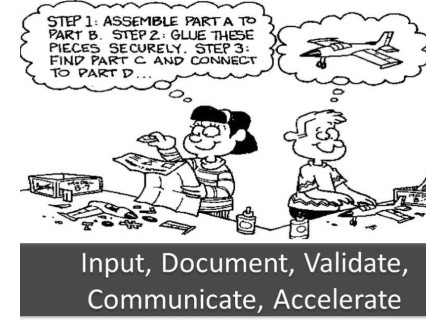
One of the key aspects of project management is the application of good time management techniques. However, no two projects are exactly alike and each individual project will have its own complexities which the project manager needs to control. With regards to time management, there will almost certainly be issues arising during the course of a project. However, where such issues occur they can and should be used to positively impact the current and future projects.
Important lessons come from failure
Some of the most important lessons that can be learned come from mistakes, errors, and failures. How project managers capture and examine failings will determine the effectiveness of actions put in place as a result. By having an executable learning process from the outset, project managers will be better positioned to ensure that lessons are learned and improvements made.
Four steps to learning lessons within the project management framework
Step 1: Gain universal inputs
The process of capturing lessons learned should be a scheduled task, with all project stakeholders encouraged to submit lessons learned whenever needed. These stakeholders might include the client, suppliers, sponsors, and contractors. All opinions should be sought as soon as a failure occurs, ensuring accurate recollection and assessment.
Step 2: Document the evidence
Once evidence has been gathered, the project manager should document the findings ready for review. This review should be targeted to a determination of causality, with ‘what if’ questions used to gain a better understanding of the failure and lessons learned.
Step 3: Validate the lessons learned
Having determined the cause of failure, the project manager will need to revisit with those who gave inputs in step 1 in order to validate and improve the lessons learned. This will increase usefulness for the current project and other projects in the future.
Step 4: Communicate lessons to the wider audience
Finally, lessons will need to be communicated to the wider audience, contractors and other stakeholders. Documented evidence, validations, and learnings will form a new base of knowledge moving forward. This can be used to ensure similar failings are avoided moving forward, thus improving time management processes and reducing scheduling issues.
Lessons learned lead to continuous improvement
Each failing that leads to a lesson learned will lead to an improvement in process moving forward. These become best practices, accumulating to create an inherent process of continuous improvement. Measures put in place to improve process are likely to include new and improved techniques and tools which will speed-up work. Checklists may be produced to avoid similar mistakes, and workarounds that achieve results may prove to be viable solutions in future projects.
By learning from mistakes, and documenting lessons and revised processes, the project manager will move from a hindsight mentality to having the ability of foresight, with time management improving exponentially.
